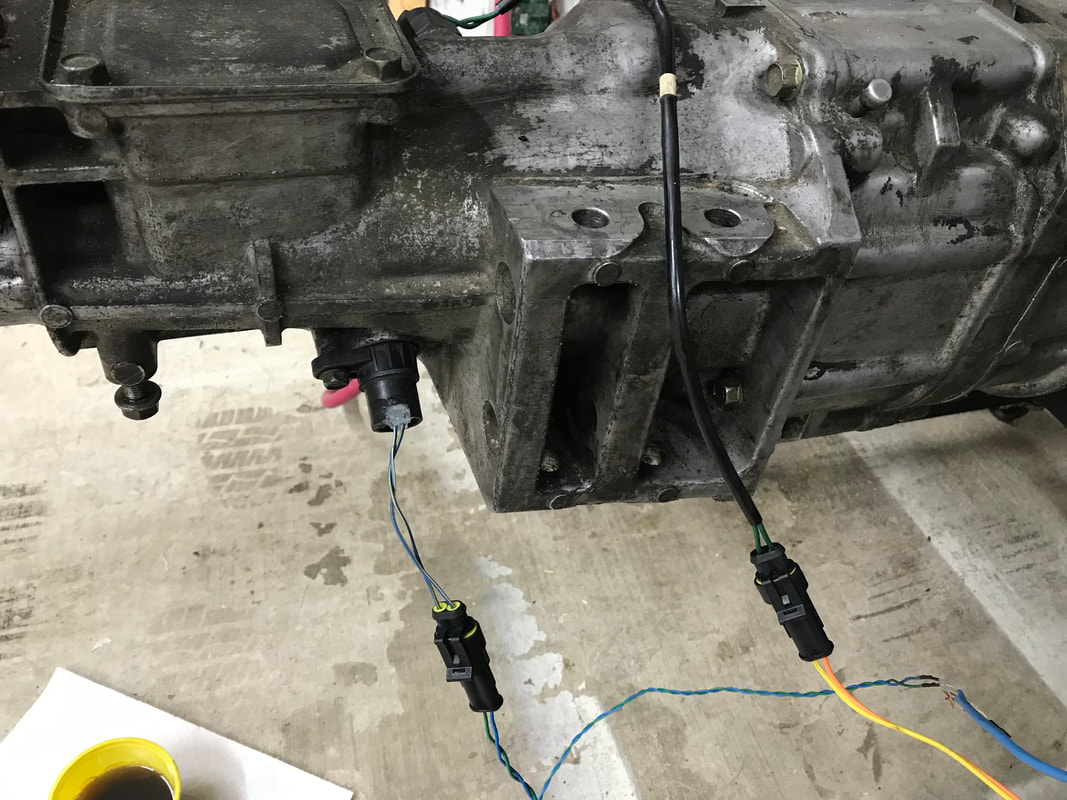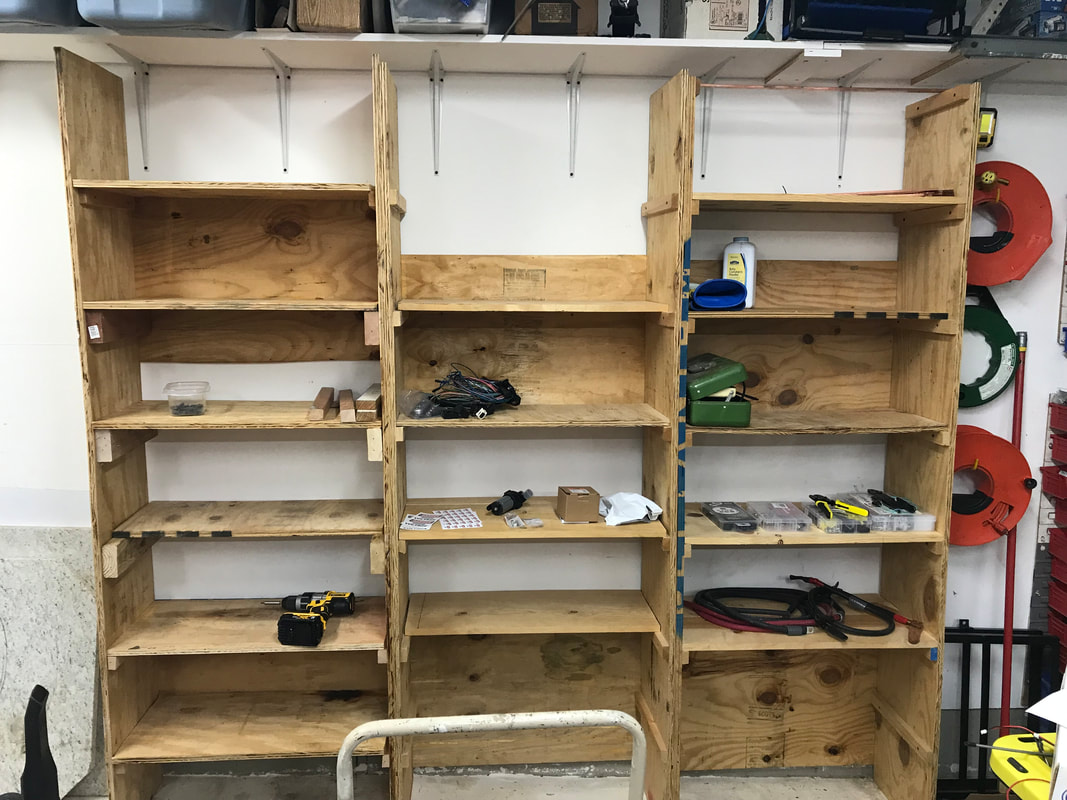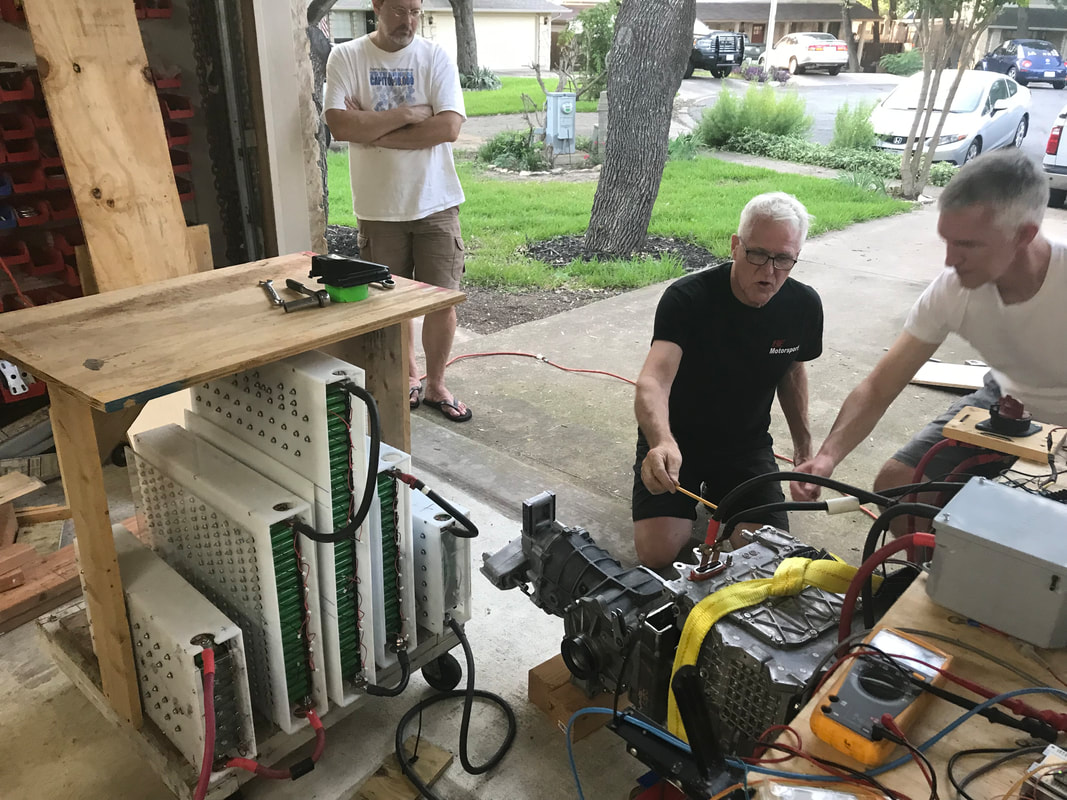|
Hello Electrified Miata and Formula Mazda-E fans! It's been two weeks since our last update and we've been busy!. Dave and Broch Evan's brought the Formula Mazda motor and transmission on car night. Would the 3-D printed motor to transmission coupler self-destruct while spinning? Joe brought a oscilloscope to sniff out the gory details of the Pico micro-controller and transmission speed sensor. A huge thanks to Winefred Washington who donated some shelves to help organize this project. Join us on the journey to go faster, quietly and efficiently using the power of electricity. Electrified Miata News: One of the first steps to insure no electrical issues is to have good connectors. The Miata transmission plastic connectors had gotten brittle with age and heat cycles. I located some weather proof connectors and the associated crimping tool on Amazon. It really is a amazonian jungle out there sifting through reviews. When car night arrived, installing new connectors was our evening task. Brian, Bruce, Nolan, and Xiaoyao arrived. Xiaoyao, Nolan's friend, a freshly minted Mechanical Engineer from Rice University had some questions about the project, so we took time to demonstrate and answer questions. My favorite comment from that evening was "You can still do college things after college" :) Maybe that's why we have so much fun. After the demonstration, we got busy making test connections to verify we understood the connector assembly process before cutting any Miata wires. After some experimentation and web searching, we found the correct method of assembling the connectors and installed these on the transmission. Verifying the connectors with a meter, we noticed the neutral switch didn't always reach a low resistance state as it should. We swapped the neutral with the reverse switch thinking the reverse would have less wear. No change. Sometimes the resistance would be as high as 100 ohms in the "on" state. That seems quite high. I wonder if gear oil got in the switch? Was this going to be a problem? The Pico was perfectly happy with the signal. I used an LED to monitor what the Pico software was detecting and I'm happy to report that neutral position is detected every time! With the neutral switch working well, it was time to turn my attention to the Vehicle Speed Sensor (VSS). After much investigation and bench testing, I concluded that the best method for detecting the pulse width from the VSS, which reflects the speed of the transmission shaft, would be using the Pico's Programmable Input Output (PIO) module. The PIO's are designed to manage inputs and outputs reliably at high speeds. The PIO's also required more study, since they are controlled using assembly language. Geek mode on: Running any form of Python has it's problem when you want hard real time performance. Modern processors are fast enough to mostly overcome performance issue as long as you can accept some jitter in your design. Measurements on the (VSS) need to be as accurate as possible and the Pico doesn't have as much processing power as a Pi 4 we are using. However, the Pico has 4 extra PIO processors, that run at clock speed (125 Mhz) or slower and are designed so each instruction takes exactly one clock cycle. This means we can capture IO pin transitions at a relatively high rate of speed (16 nano seconds). Use of this awesome set of processors requires learning PIO assembly code. Lucky for us, searching on Google provides both YouTube and code examples. Prior programming in assembler is also quite useful. The PIO waits for the input pin to transition and then starts counting until the input pin transitions again. After that, it sets an interrupt flag so main processor will be interrupted and can retrieve the count measured by the PIO. The amount of time the main processor spends handling the interrupt can be critical, as the interrupts can happen at a high rate of speed, and more of them the faster we go. To measure the time of this interrupt routine, Joe suggested using the GPIO pins, since this doesn't interfere with the measuring process very much. We measured the interrupt routine taking 3 milliseconds. As the transmission shaft speed rises, there are more interrupts happening leaving less time for the rest of the program to send data. Eventually, all the time is spent on servicing the interrupt with no time left to send the data out. Using the scope, we also found the duty cycle of the VSS wasn't symmetrical and my current software only measured the 'low' time of the square wave signal. I made this choice assuming a symmetrical duty cycle. Since we can measure quite accurately, I can get the data twice as fast. Who wants slow data? The Pico can multiply by 2X, much faster than waiting for the complete cycle. However, all bets are off if the waveform is not symmetrical. Thanks Joe for helping figure out the various issues. Geek Mode off: Organization is key in any large job. Converting a car to electric has lots of little pieces. I can work in a certain amount of chaos, but there is a limit and it's been reached. Thanks to Winefred Washington, a set of shelves that use to hold candy (check out "Sweet Shack Candy Shop" in Cedar Park) became available to us. I thought theses shelves should now hold "EV candy". Sawyer helped with assembly this week as a Father's day gift to me and we finished off the last section on car night! Thanks Bruce, Nolan, Broch, Dave, Sawyer and anyone else work worked on these. I noticed Bruce taking the time to teach Nolan some construction and encourage Nolan to get familiar with using a circular saw. We like to pass on our accumulated knowledge to next generation. Use of the saw however, did cause side effects I'd gotten in the habit of powering the ex-go-kart Pi's with my Variac battery charger. When the Pi's were used in the go-kart, everything was connected to batteries. Not wanting to overcharge the batteries, I only used enough voltage from the Variac to just start to draw current. This same setting without the batteries left the regulators with no extra room to regulate. The highest voltage requirement is the network switch (at 9 volts). Do you see a problem? Use of the saw would temporarily lower the line voltage and reset the network switch. This was quite annoying when I had nine Secure Shell connections open from the laptop to the various Pi's through the network switch. Once we discovered the problem, we timed our saw cuts appropriately.. :). In the future, I'll turn up the Variac and give the regulators a chance to do their job. Formula Mazda-E News: Since we now have a battery pack assembled, it is much easier to test the parts we have. One of the concerns when assembling a transmission and motor is shaft run-out. This is typically caused by misalignment of the two shafts or an unbalanced coupling. We wanted to test what we've accomplished to date, but didn't have the metal shaft coupling available yet. Broch 3D printed the coupler in plastic and we tried it out. Unlike a gasoline motor with it's explosive forces, with an electric motor we can precisely control the amount of torque to a fine degree. I would expect the plastic to break quickly if we applied full torque or had a significant load. Could we control the torque well enough to perform a run-out test without shattering the plastic coupler? The answer is YES! The motor and transmission combination ran very smoothly with no vibrations. Success! Here is Dave and Brian checking the run-out. As a side note, it was easy to swap the Formula Mazda-E motor with the Electrified Miata motor/transmission in less than 10 minutes. Thatincludes the 5 minutes that we waited for the Formula Mazda-E motor to discharge the high voltage in the inverter. Two signal connectors and power were all that was required. The motor/inverter combination didn't rise above garage temperature, so no need for cooling. There are definite advantages to working and testing electric motors compared to gasoline motors.
Next week's goals for the Electrified Miata will be to continue work on the VSS sensing so we can determine what gear the transmission is in when running. Next weeks goals for the Formula Mazda-E will be to finish work on the transmission coupling so that it can be ordered in 4140 metal as well as continue to prepare a mounting for the batteries. As always, thanks for reading!
0 Comments
Leave a Reply. |
AuthorBill likes cars that understand the 'go fast now' pedal. Archives
May 2022
Categories |
Proudly powered by Weebly




 RSS Feed
RSS Feed